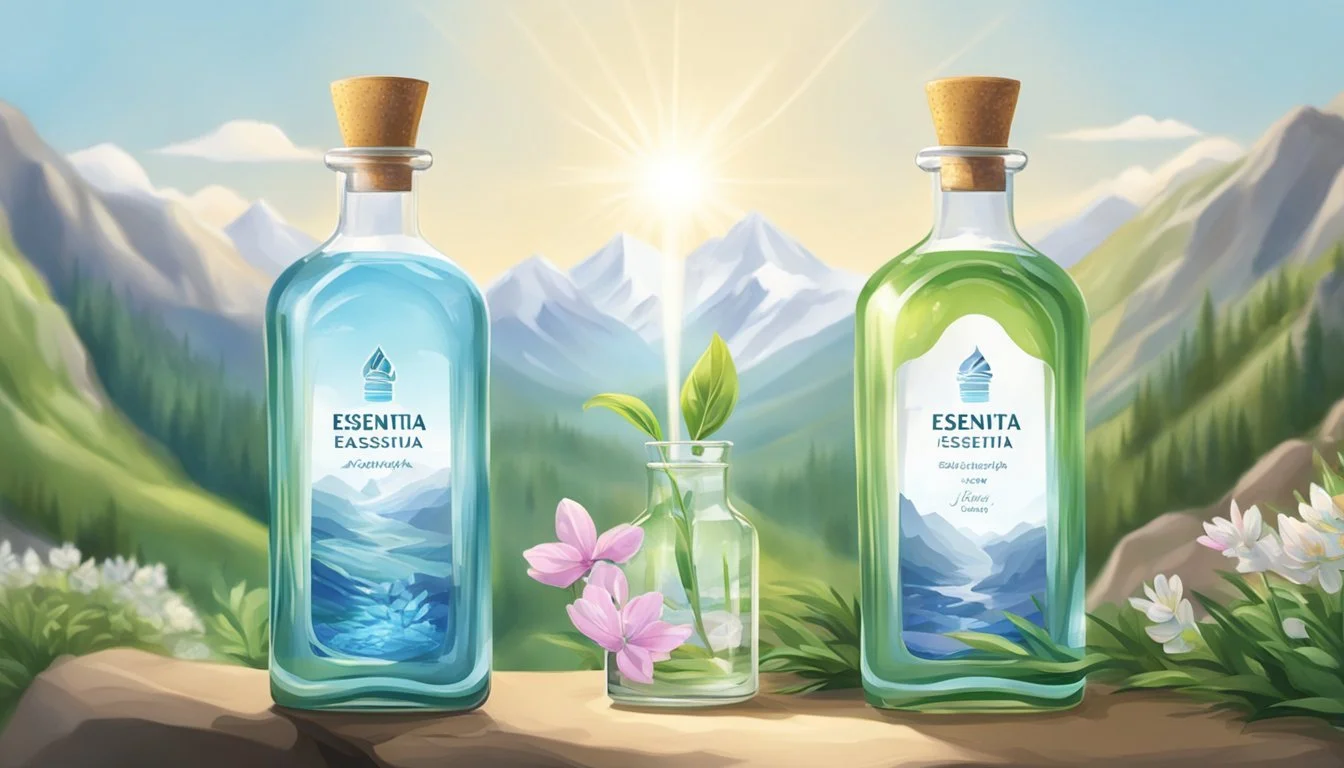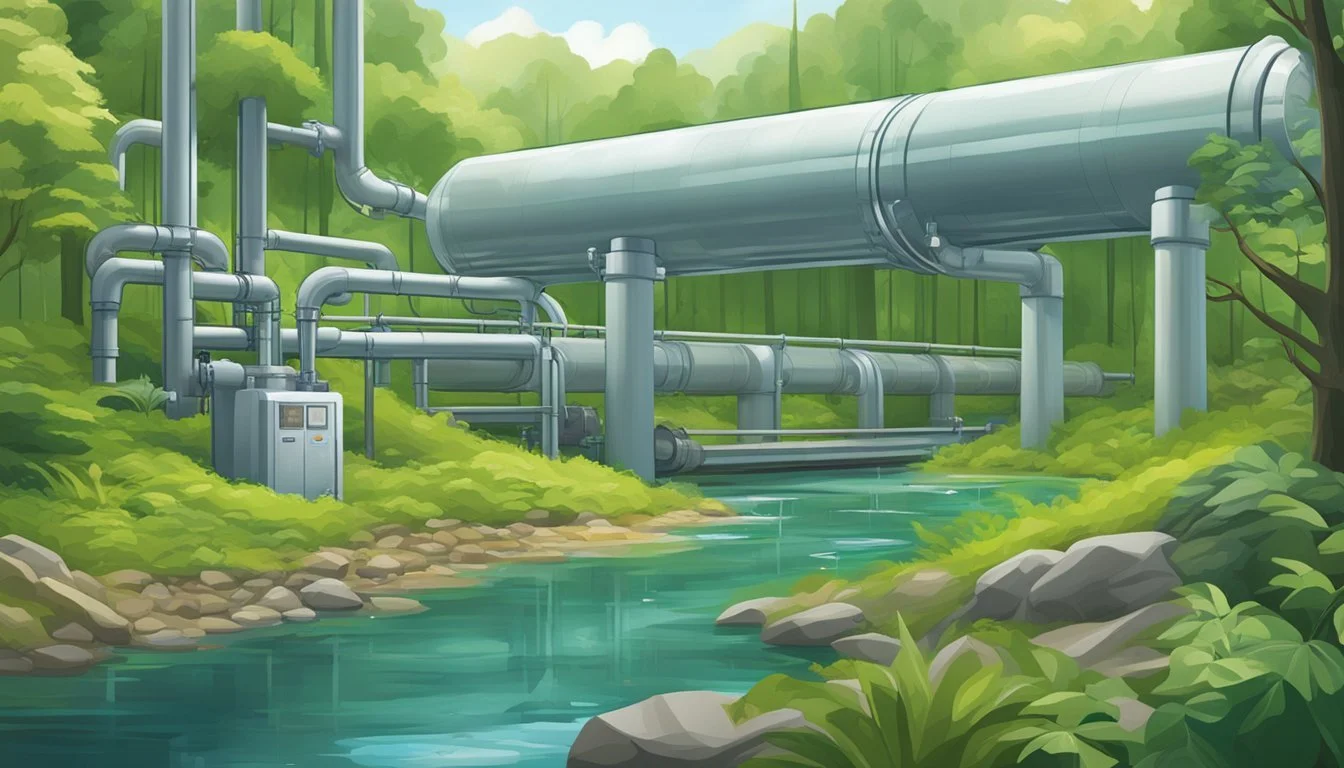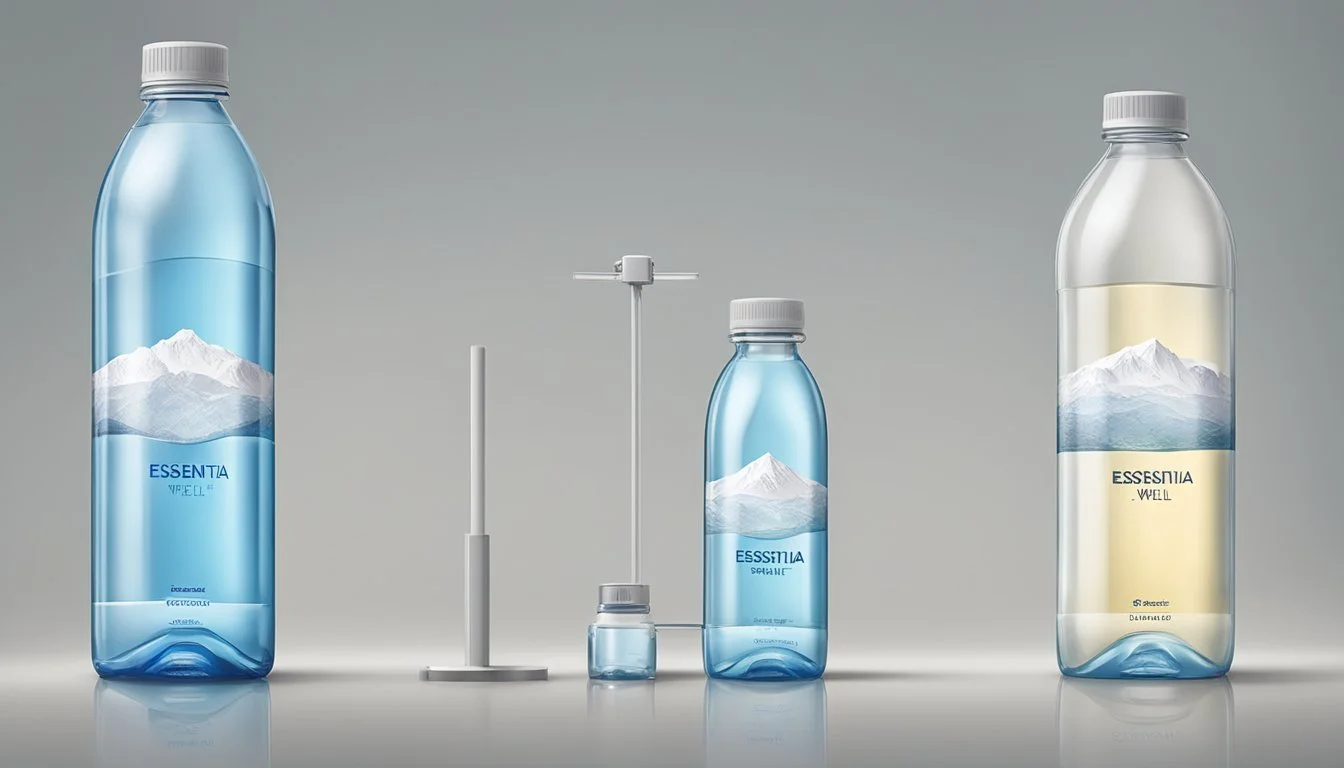Essentia vs. The Well
The Ultimate Bottled Water Showdown
When it comes to choosing between Essentia and The Well bottled water, consumers often find themselves weighing the benefits of each. Essentia stands out with its high pH level of 9.5 or higher, which many believe enhances hydration and supports body balance. It undergoes a rigorous filtration process that includes micro-filters, reverse osmosis, and ultraviolet exposure, resulting in 99.9% purity.
By contrast, The Well bottled water focuses on its natural spring sources and sustainability practices, appealing to eco-conscious consumers. It promises a clean, crisp taste and maintains a slightly alkaline pH, though not as high as Essentia. Each brand offers unique selling points, making the choice dependent on individual needs and priorities.
Determining which bottled water is better ultimately depends on what the consumer values more. Some might prefer Essentia for its technical purity and electrolyte content, while others might lean towards The Well's commitment to natural sourcing and environmental impact. With these factors in mind, readers can make a more informed decision about their hydration choices.
Unveiling Essentia and The Well
Essentia and The Well are prominent names in the bottled water industry, known for their unique attributes and consumer appeal.
Essentia is celebrated for its high pH level of 9.5, making it one of the more alkaline options available. It promises clean and crisp water through a proprietary ionization and purification process. This brand claims to enhance hydration due to its optimized mineral content and alkaline nature.
The Well, on the other hand, focuses on purity and sustainability. It often emphasizes sourcing from natural springs and implementing eco-friendly packaging solutions. The Well's water undergoes minimal processing, highlighting its commitment to delivering natural taste and high quality.
Features Comparison
Feature Essentia The Well pH Level 9.5 (high alkaline) Slightly alkaline or neutral Purification Proprietary ionization process Minimal processing Source Various purified sources Natural springs Packaging PET plastic, BPA-free Eco-friendly, sustainable options Mineral Content Enhanced with electrolytes Natural minerals maintained
Consumer Considerations
Health Factors: Essentia’s alkaline water is believed to support better hydration. The Well offers a more natural mineral composition.
Environmental Impact: Essentia uses BPA-free plastic. The Well tends to offer more sustainable packaging.
Taste Profile: Essentia has a crisp taste. The Well is praised for its natural and pure flavor.
Analyzing Water Quality and Purity
Assessing the quality and purity of bottled water involves examining the presence of essential minerals and electrolytes, detecting contaminants and pollutants, and measuring pH levels.
Essential Minerals and Electrolytes
Essentia water and The Well both emphasize the addition of essential minerals and electrolytes to enhance hydration. These minerals include calcium, magnesium, and potassium. Essentia water is fortified with electrolytes, promoting effective rehydration and electrolyte balance.
The Well also contains minerals, though the exact composition depends on the source. The inclusion of these minerals not only improves taste but also contributes to the body's nutritional intake of important electrolytes that support overall well-being.
Identifying Contaminants and Pollutants
Both brands aim to minimize contaminants, but the extent of filtration processes plays a crucial role. Essentia undergoes a comprehensive purification process that includes reverse osmosis for removing lead, fluoride, and other potential pollutants.
The Well utilizes natural spring water sources, but the purity can vary based on environmental factors. Effective testing protocols help ensure that harmful contaminants like PFAS chemicals and heavy metals are absent, maintaining safety and cleanliness.
The Role of pH in Bottled Water
pH levels indicate the acidity or alkalinity of water, influencing both taste and health benefits. Essentia water has a high pH level, typically over 9.5, making it highly alkaline. This alkalinity is believed to provide better hydration and support a balanced body pH.
The Well has a naturally balanced pH, usually around 7, which is considered neutral. This level ensures the water is not too acidic or alkaline, offering a refreshing and natural drinking experience. Maintaining optimal pH levels ensures that the water remains safe and beneficial for consumer consumption.
Water Source and Filtration Processes
Essentia and The Well utilize distinct methods for sourcing and purifying their water, influencing both quality and taste. The processes employed by each brand range from municipal sources enhanced through ionization to natural spring sources.
Reverse Osmosis and Purification
Essentia Water employs a rigorous purification method. It begins with local municipal sources which then undergo a multi-step process. This includes carbon filtration, reverse osmosis, and ultraviolet light treatment. Reverse osmosis removes a high percentage of contaminants, ensuring higher purity.
To further enhance the water, Essentia uses a proprietary ionization process. Electrolytes are added after this step, which not only improve water quality but also substantially alter the taste.
The Well’s approach to purification also involves reverse osmosis. Starting from municipal supplies or pre-treated sources, the water is filtered to remove particulates and dissolved solids. This ensures a cleaner and safer drinking experience. Mineral addition occurs post-filtration to balance the taste.
Natural Springs Versus Purified Sources
The Well often highlights its use of naturally-sourced spring water. Sourcing from protected natural springs, the emphasis is on minimal intervention. This water undergoes microfiltration to remove impurities while maintaining natural mineral content. The unique taste profile and inherent minerals resonate well with consumers seeking natural options.
Essentia does not specifically rely on natural springs. Instead, it focuses on transforming municipal water through advanced techniques. The multi-step process not only purifies but also increases the water's alkalinity to a pH of 9.5 or higher. This positions Essentia as a choice for those seeking scientifically enhanced hydration.
Both brands cater to different preferences: one rooted in natural purity and the other in advanced purification technology.
Health Benefits and Hydration
Essentia and The Well both offer unique advantages in terms of health benefits and hydration. Each brand aims to provide better hydration, varying pH levels, and distinct mineral content to suit different needs and preferences.
Enhanced Hydration and pH Balance
Essentia Water has a high pH of 9.5, which qualifies it as alkaline water. Alkaline water proponents suggest that the higher pH level can help neutralize acid in the bloodstream, promoting better hydration and reducing acid reflux symptoms.
The Well, while not typically marketed for a high pH, focuses on balanced mineral content to achieve hydration. Its pH level is closer to that of natural spring water, around 7 to 7.5. This neutral pH level makes it suitable for most people.
Drinking Water for Active Lifestyles
For those with active lifestyles, maintaining proper hydration is crucial. Essentia Water is ionized to enhance its hydrating properties, making it particularly appealing to athletes and individuals who engage in strenuous activities.
The Well offers a balanced blend of minerals that also supports hydration but does not emphasize a high pH level. This makes it a versatile choice for hydration without the specific alkaline benefits that Essentia focuses on.
Considering the Mineral Content
Mineral content plays a significant role in the taste and health benefits of bottled water. Essentia Water uses a proprietary process to add electrolytes such as calcium, magnesium, and sodium, which can aid in nutrient transport and muscle function.
The Well typically offers water sourced from natural springs, providing a more organic mineral composition. It includes essential minerals that can enhance taste and support overall well-being but does not go through the same ionization process as Essentia.
Both brands aim to provide better hydration, but their approaches to pH level and mineral content set them apart, catering to varied dietary and lifestyle needs.
Taste Profile Comparison
The taste profiles of Essentia and The Well are influenced by factors such as alkalinity and purity, contributing to their distinct water tastes. Both aim to provide a clean and smooth taste, though their methods differ significantly.
The Influence of Alkalinity on Taste
Essentia boasts a high pH level, typically around 9.5. This high alkalinity slightly alters the water taste, imparting a mild, smooth finish that some find refreshing. The ionization process used by Essentia not only increases alkalinity but also claims to improve hydration.
On the other hand, The Well, a brand known for its balanced pH around 7, offers a more neutral water taste. This neutrality ensures that the taste remains clean and familiar, without the unique flavor brought by high alkalinity. Consumers who prefer a standard, no-frills drinking experience may lean towards The Well for this reason.
The Significance of a Clean and Smooth Taste
Smoothness and cleanliness in taste are critical when evaluating bottled water. Essentia's ionization process emphasizes delivering a smooth taste, free from impurities. This results in a water taste that feels easy on the palate, ideal for those who appreciate a sleek and refined drinking experience.
The Well focuses on purity, utilizing rigorous filtration processes to remove contaminants. This stringent purification ensures a clean taste, free from any lingering aftertaste or chemical notes. Those sensitive to flavor consistency might find The Well appealing due to its reliable and straightforward taste profile.
Both brands achieve a clean and smooth taste, though through different technologies and philosophies. Essentia's approach enhances the water with electrolytes, contributing to its trademark smoothness. In contrast, The Well relies on advanced filtration to deliver its signature clean taste.
Packaging and Environmental Considerations
Understanding the effects that bottled water packaging has on the environment can guide consumers in making more sustainable choices. The two main aspects to consider involve the material of the packaging and the implications of those materials on health and the environment.
The Impact of Plastic Bottles on the Environment
Plastic bottles, commonly made from polyethylene terephthalate (PET), are a significant contributor to environmental pollution. They are not biodegradable and can take hundreds of years to decompose. When these bottles break down into microplastics, they contaminate soil and water sources.
BPA (bisphenol A), a chemical found in some plastics, is a health concern as it can leach into the water and has been linked to various health issues. Regulatory agencies like the Environmental Protection Agency (EPA) monitor these substances to manage their impact.
The production and disposal of plastic bottles also contribute to carbon emissions, aggravating climate change. Therefore, the environmental footprint of plastic bottles is considerable, with implications for both ecosystems and human health.
Sustainable Alternatives in Bottled Water
Some companies are exploring sustainable alternatives, such as boxed water or plant-based plastic bottles, which decompose more quickly and reduce the overall environmental impact. Using recycled materials for bottle production can also lessen the demand for new plastic resources, promoting a circular economy.
Brands like The Well and Essentia are increasingly adopting more eco-friendly practices. They are exploring packaging innovations that align with sustainability goals, aiming to reduce their environmental footprint while catering to consumer demand for healthier and safer products. Adopting these measures could significantly reduce the ecological burden of bottled water.
Comparative Analysis of Manufacturing Brands
Essentia and The Well are prominent brands in the bottled water market, both offering unique qualities and manufacturing processes. This section will explore the market positions of these brands and their philosophies, including how they foster consumer trust.
Market Leaders in Bottled Water
Essentia Water has established itself as a leader in the alkaline water segment. It utilizes advanced purification techniques such as reverse osmosis and micro-filtration, achieving 99.9% purity. The high pH level of 9.5 or above sets it apart in its category.
The Well, contrastingly, focuses on natural spring water sourced from pristine locations. It emphasizes minimal processing to retain natural minerals, appealing to consumers seeking a more "natural" choice in bottled water.
Companies like Nestlé, Coca-Cola, and PepsiCo dominate the bottled water market with brands like Poland Spring, Dasani, and Aquafina. However, niche brands like Voss and FIJI Water have carved out significant market shares due to their premium positioning and unique sourcing.
Brand Philosophies and Consumer Trust
Essentia Water promotes health and wellness through scientifically engineered water. Their process involves ionization and addition of electrolytes, which they claim enhance hydration. This resonates with health-conscious consumers and athletes.
The Well, in comparison, markets itself on purity and environmental sustainability. It uses eco-friendly packaging and sources water from sustainable springs. This approach builds trust with environmentally aware consumers.
Smartwater, LIFEWTR, and Ethos Water by Coca-Cola focus on lifestyle branding and often partner with artists and influencers. These strategies foster consumer loyalty through emotional connections and brand storytelling.
By blending advanced purification methods with targeted marketing strategies, Essentia and The Well effectively cater to different consumer philosophies, illustrating their unique positions in the crowded bottled water market.
Final Verdict: Essentia vs. The Well
When comparing Essentia and The Well, several factors come into play.
Essentia water boasts a high pH level of 9.5. It undergoes rigorous processing, including micro-filters, reverse osmosis, and ultraviolet exposure, achieving 99.9% purity. The water is then ionized and infused with electrolytes, resulting in ionized alkaline water. This process aims to enhance hydration and maintain a clean, crisp taste.
The Well focuses on delivering purified water, subjected to a multi-step filtration process. While details about its pH level are less specific compared to Essentia, The Well emphasizes purity and health benefits. It might not undergo ionization but aims to deliver a refreshing and safe drinking experience.
Feature Essentia The Well pH Level 9.5 Not specified Filtration Micro-filters, reverse osmosis, UV Multi-step filtration Purity 99.9% High Ionized Yes Not indicated Electrolytes Infused Not specified Taste Clean, crisp Refreshing
Personal preference plays a crucial role. Those who prioritize alkaline water might lean towards Essentia due to its higher pH and ionization process. On the other hand, consumers seeking purified water without specific preferences towards alkalinity might find The Well appealing.
Both brands aim to provide high-quality water, but the choice hinges on what factors matter most to the individual.
More About Essentia
Essentia vs Cascade Mountain: Which Bottled Water is Better?
Essentia vs Hawaiian Springs: Which Bottled Water is Better?
Essentia vs Icelandic Glacial: Which Bottled Water is Better?
Essentia vs Kirkland Signature: Which Bottled Water is Better?
Essentia vs Mountain Valley Spring Water: Which Bottled Water is Better?
Essentia vs Nestle Pure Life: Which Bottled Water is Better?
Essentia vs Richard's Rainwater: Which Bottled Water is Better?
Essentia vs Talking Rain AQA: Which Bottled Water is Better?
Essentia vs Whole Foods Italian Still Mineral water: Which Bottled Water is Better?
More About The Well
Cascade Mountain vs The Well: Which Bottled Water is Better?
Hawaiian Springs vs The Well: Which Bottled Water is Better?
Icelandic Glacial vs The Well: Which Bottled Water is Better?
Mountain Valley Spring Water vs The Well: Which Bottled Water is Better?
Nestle Pure Life vs The Well: Which Bottled Water is Better?
Richard's Rainwater vs The Well: Which Bottled Water is Better?
The Well vs Kirkland Signature: Which Bottled Water is Better?
The Well vs Talking Rain AQA: Which Bottled Water is Better?
Whole Foods Italian Still Mineral water vs The Well: Which Bottled Water is Better?







